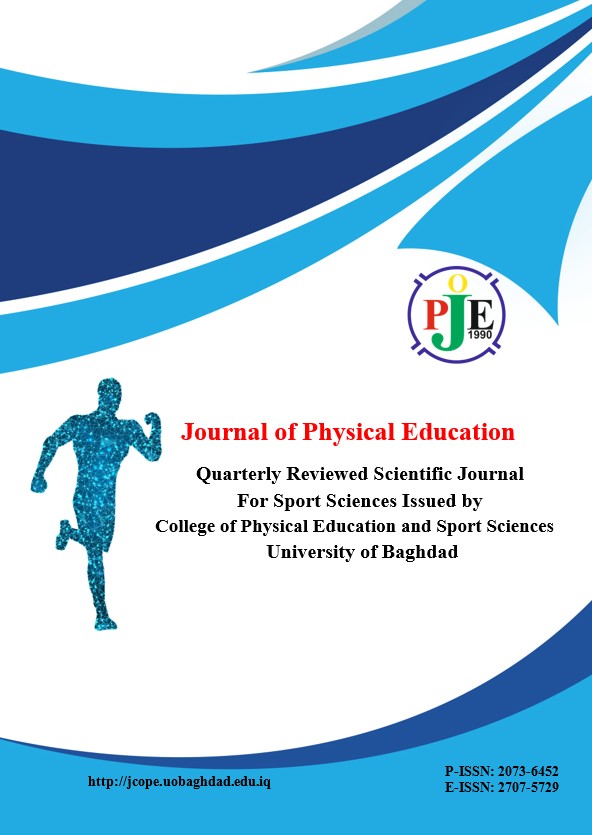نسبة مساهمة المتغيرات البيوميكانيكية (زاوية الجذع وزاوية الركبة للمرجحة الامامية ) وعلاقتها في طول الخطوات الاولى لعدائي سباق 100م
DOI:
https://doi.org/10.37359/JOPE.V29(4)2017.269الملخص
.يهدف البحث الى تحديد نسبة مساهمة كل من المتغيرات البيوميكانيكية (زوايا الجذع والركبة) في طول الخطوة والتعرف على العلاقة بينهما عند عدائي سباق 100م. تم استخدم المنهج الوصفي لتحقيق أهداف البحث، كما تم اجراء الاختبارات على أربعة عدائي السرعة لنادي نصيرة نونو، ولجمع المعلومات عن متغيرات البحث، استخدمنا مجموعة من الادوات والمتمثلة في مجموعة من الكاميرات وجهاز كمبيوتر ومجموعة من البرمجيات (برنامج kinovea للتحليل الحركي الاصدار 0.8.15، برنامج After Effect، برنامج Phtoshop) وبعد المعالجة الاحصائية وعلى أساس النتائج استنتجنا أن هناك علاقة ذات دلالة احصائية بين زاوية الجذع وطول الخطوة الاولى والثانية والرابعة وعلاقة بين زاوية الركبة (المرجحة الامامية) وطول الخطوة الاولى والثانية والرابعة كما استنتج الباحث على أن هناك نسب متفاوتة لزاوية الجذع والركبة في طول الخطوة فكانت أعلى نسبة في الخطوة الرابعة. ويوصي الباحثون بالتركيز على زوايا الجسم في مرحلة الانطلاق في التدريب وتقويم الاداء لما لها من علاقة مع مختلف مراحل السباق وخاصة في 20م الاولى.






